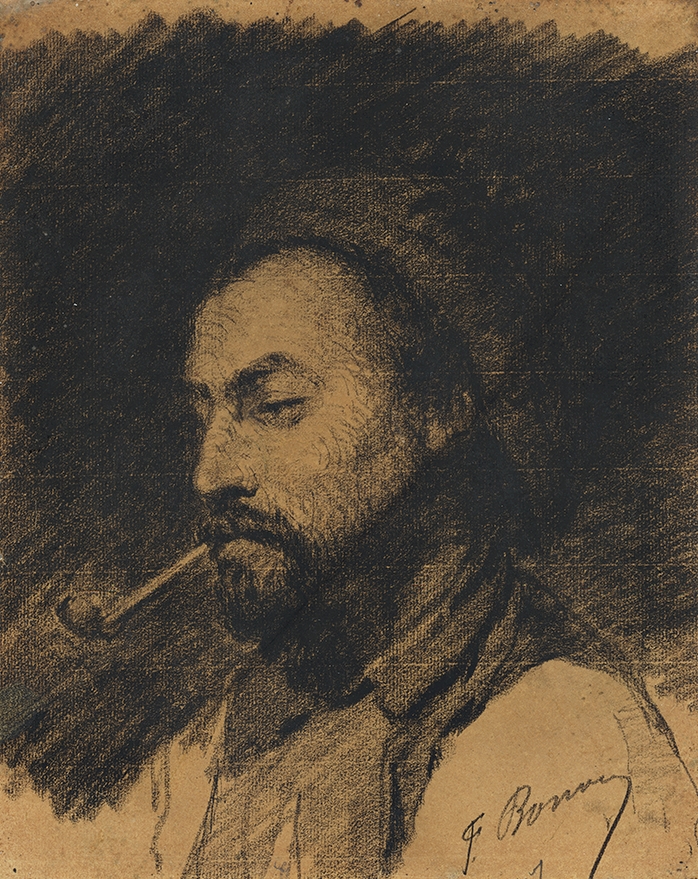A superb portrait’s sheet by François Bonvin. His modern reputation rests largely on his drawings. The present sheet is an early drawing by the artist, whose first dated works were executed in 1845 and 1846, white he still worked as a civil servant. At this point, at the outset of his artistic career, he would not be able to afford models, and would often make drawings of friends and their families. lt was also during this period that Bonvin would occasionally exhibit his drawings under the arcades of the Institut de France, and it was there that he met the collector Louis Laperlier, who was to become his first and most loyal patron. Laperlier started to collect drawings by Bonvin in 1846 and, as the artist later recalled, ‘Mon prix ordinaire était de 12 francs pour 8 dessins à l’aquarelle. M. Laperlier ne collectionnait guère que mes dessins, de préférence à tout autre, et il ne passait guère de semaine sans que je n’empochasse mes 12 francs.’
Born into poverty, François Bonvin studied at the Ecole de Dessin in Paris between 1828 and 1830, but had to abandon his studies to begin work as a typesetter and printer. His earliest known works date from the late 1830’s, by which time Bonvin was also working as a police clerk. He eventually returned to his studies at the Ecole de Dessin – a school geared primarily towards the decorative arts – and in 1843 began attending life-drawing classes at the Académie Suisse. Around this lime, he met his mentor, the painter François-Marius Granet, who encouraged him to study 17th century Dutch and Flemish painting as a way of refining his approach to genre subjects. Bonvin would, in later years, make several trips to the Netherlands to study the work of the Dutch painters in person. Perhaps with the support of Granet, who was on the jury, Bonvin made his Salon debut in 1847, and he continued to show there until 1880, earning a reputation as a genre and still-life painter. Bonvin rose to become one of the leaders of a group of Realist painters in 19th century France who found inspiration in subjects and scenes taken from contemporary urban life. Many of the models for his drawings and paintings seem to have been habitués of the inn owned by his father in Vaugirard. ln 1859 several his paintings were accepted for exhibition at the Salon, though Realist works by such friends and colleagues as Henri Fantin-Latour, Alphonse Legros, Théodule Ribot and James McNeill Whistler were rejected. As a result, Bonvin invited these artists to exhibit their rejected works at his studio, known as the Atelier Flamand, an offer repeated after the Salon of 1863. Later that year his wife left him, and Bonvin found it difficult to concentrate on his paintings, preferring instead to make numerous drawings. ln his final years he grew blind and suffered from paralysis. He died in impoverished circumstances in 1887.
Interior of a Tavern (Museum of Fine Arts, Arras)
Pensive introspection
Autoportrait en 1847: meme fond noir







